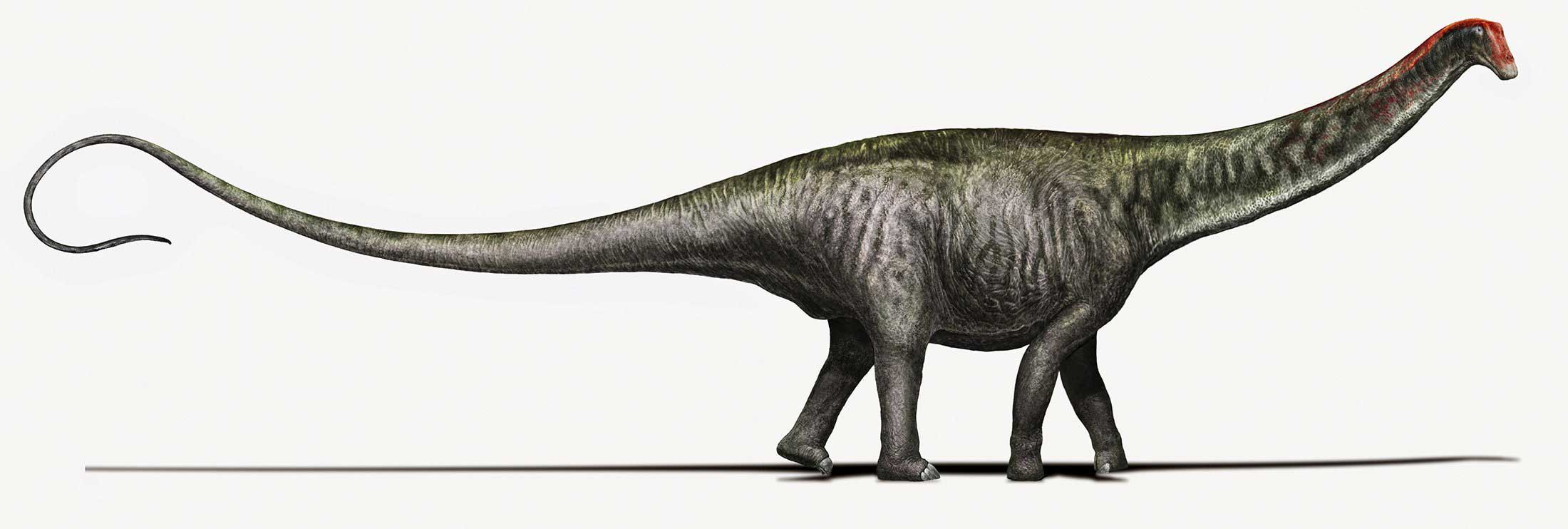
When I first tell someone I’m a paleontologist, I get a pretty consistent set of responses, the most common being “Like Ross from Friends?!” followed by “I wanted to do that when I was 5!” and, eventually, “Is it true that there is no such thing as Brontosaurus?”
And until a study came out on Tuesday, that answer required a simplified version of a long, convoluted story: “Yes, Brontosaurus is the same as a dinosaur called Apatosaurus. But in the early 1900s scientists realized that the proposed differences between these two animals were subtle, and since Apatosaurus was named first, it is the correct name. Brontosaurus has only persisted in the public’s vocabulary because some museums continued to use the name on signs, and because nearly everyone agrees it has a better ring to it.”
The study, conducted by paleontologist Emanuel Tschopp along with two other researchers (full disclosure: I published two papers with an author of the study, Roger Benson, in 2013) challenges the long-held invalidity of Brontosaurus. When I first heard of their preliminary results at a scientific meeting a couple of years ago, I thought perhaps I wouldn’t have to go through my convoluted explanation ever again, and that people could enjoy the name Brontosaurus once more. And this week, the welcome-back party for Brontosaurus in the media and on the Internet has been, like the animal, gargantuan. But is Brontosaurus really back?
The new study analyzed each published fossil ascribed to a group of dinosaurs called Diplodocoidea – which can be thought of as the “class” of a few dozen species to which famous dinosaurs such as Apatosaurus and Diplodocus belong. The level of detail presented in the study is impressive, and required Tschopp to undergo a sort of rite of passage for aspiring paleontologists, combing through museum basements around the world, where studying just one bone often requires the help of several people and a forklift.
The new study takes a non-traditional approach to taxonomy, the science of classifying animals. Most biologists define a species as a set of individuals that can reproduce over generations, grouped by their shape, size, color, DNA fingerprint, and other traits. For fossils, we usually only have access to bones, leading paleontologists to define species based on a combination of shape, and where and when the fossil is from, not reproductive potential or DNA. Reconciling these concepts so that paleontological studies are consistent with modern ones has been a challenge.
The approach taken by the new study is non-traditional in that it includes only anatomical information to determine a species, disregarding any other information. These new rules for defining a species lead to the “return” of Brontosaurus, just as changing the definition of “planet” could be made to include Pluto in that category once again.
But does this make Brontosaurus a real species any more than a rule change would make Pluto a real planet? Many would argue that taxonomy is to some degree arbitrary but should be consistent. The new study places this consistency above all else. But is consistently worth aiming for if the result is just consistently arbitrary?
One regularly finds that new scientific techniques are validated before they are published. However, no validation was performed before publication of this study, so although these dinosaur species might now be more consistently defined, there is no way to know if the new definitions reflect biological reality.
The paleontological community has already begun poring over the anatomical details presented in the paper in order to assess their validity. More recent studies like this one have tended to subdivide anatomical features ever more finely, but like Mickey Mouse fighting the broomsticks in Fantasia (a movie that also featured Brontosaurus), the division of the problem makes it harder to deal with, so it will be a while before the study is fully re-analyzed by other researchers. Each of the hundreds of anatomical features used in the new analysis is a hypothesis. Tschopp and his colleagues outlined these hypotheses in impressive detail, and each requires testing from independent observers in order for science to progress.
So, should museums rush out to print new signs for their Apatosaurus bones on display? Perhaps not just yet — as admitted by the paper’s authors, the results are far from indisputable, and just a few changes in the data result in the new family tree collapsing into a jumbled bush. The tangle of taxonomy surrounding “Brontosaurus” has only just been rekindled, and there are sure to be more surprises along the way. For me, it looks like introducing myself as a paleontologist and answering the questions about Brontosaurus that follow won’t be getting simpler any time soon.
More Must-Reads from TIME
- Cybersecurity Experts Are Sounding the Alarm on DOGE
- Meet the 2025 Women of the Year
- The Harsh Truth About Disability Inclusion
- Why Do More Young Adults Have Cancer?
- Colman Domingo Leads With Radical Love
- How to Get Better at Doing Things Alone
- Michelle Zauner Stares Down the Darkness
Contact us at letters@time.com